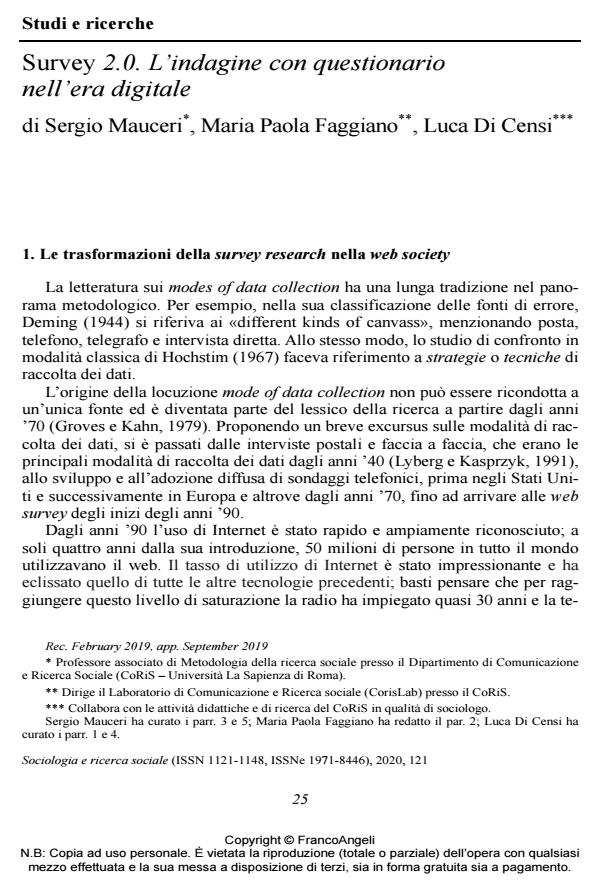Survey 2.0. L’indagine con questionario nell’era digitale
Titolo Rivista SOCIOLOGIA E RICERCA SOCIALE
Autori/Curatori Sergio Mauceri, Maria Paola Faggiano, Luca Di Censi
Anno di pubblicazione 2020 Fascicolo 2020/121
Lingua Italiano Numero pagine 24 P. 25-48 Dimensione file 256 KB
DOI 10.3280/SR2020-121002
Il DOI è il codice a barre della proprietà intellettuale: per saperne di più
clicca qui
Qui sotto puoi vedere in anteprima la prima pagina di questo articolo.
Se questo articolo ti interessa, lo puoi acquistare (e scaricare in formato pdf) seguendo le facili indicazioni per acquistare il download credit. Acquista Download Credits per scaricare questo Articolo in formato PDF

FrancoAngeli è membro della Publishers International Linking Association, Inc (PILA)associazione indipendente e non profit per facilitare (attraverso i servizi tecnologici implementati da CrossRef.org) l’accesso degli studiosi ai contenuti digitali nelle pubblicazioni professionali e scientifiche
In addition to evaluating the advantages and limits of the web survey, the authors present three particularly fruitful empirical studies, with different research designs. The studies all investigate complex social problems: an open web survey on voting intentions, an e-mail survey on the quality of university life, and a closed web survey conducted in delimited contexts on technology addiction. On the basis of these research experiences, the authors reach stimulating conclusions regarding integration strategies in the web survey design, which can be adopted in succession or concurrently: a) mixed-modes of data collection; b) Mixed Methods Research; c) inclusion of a preliminary pilot study; d) multilevel survey.
Sergio Mauceri, Maria Paola Faggiano, Luca Di Censi, Survey 2.0. L’indagine con questionario nell’era digitale in "SOCIOLOGIA E RICERCA SOCIALE " 121/2020, pp 25-48, DOI: 10.3280/SR2020-121002